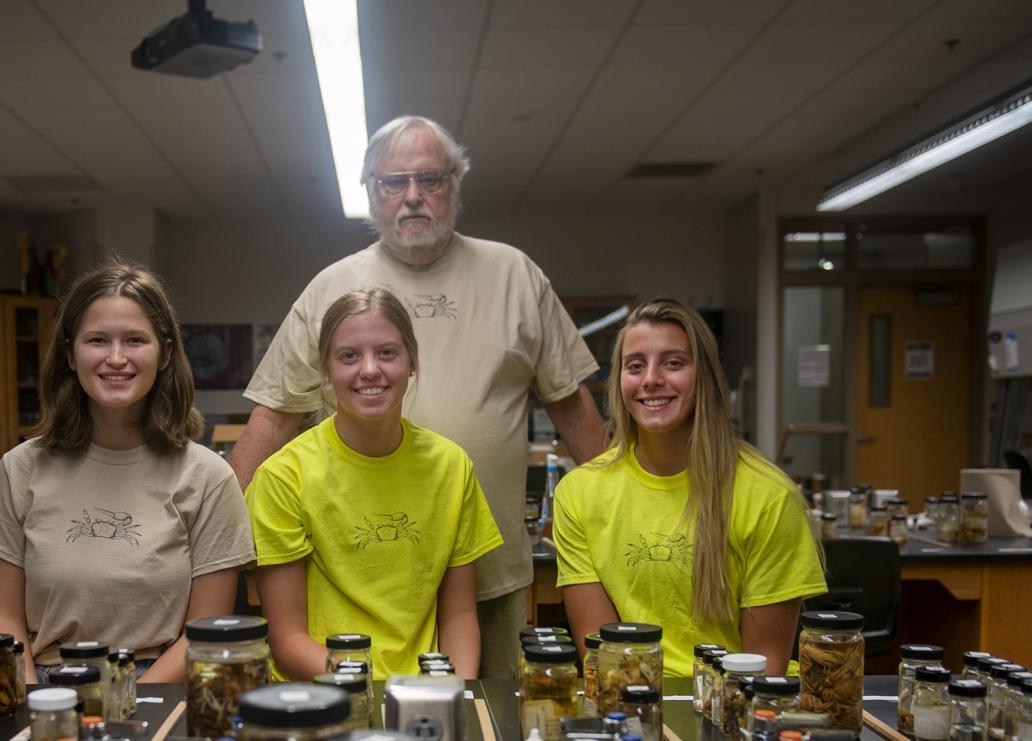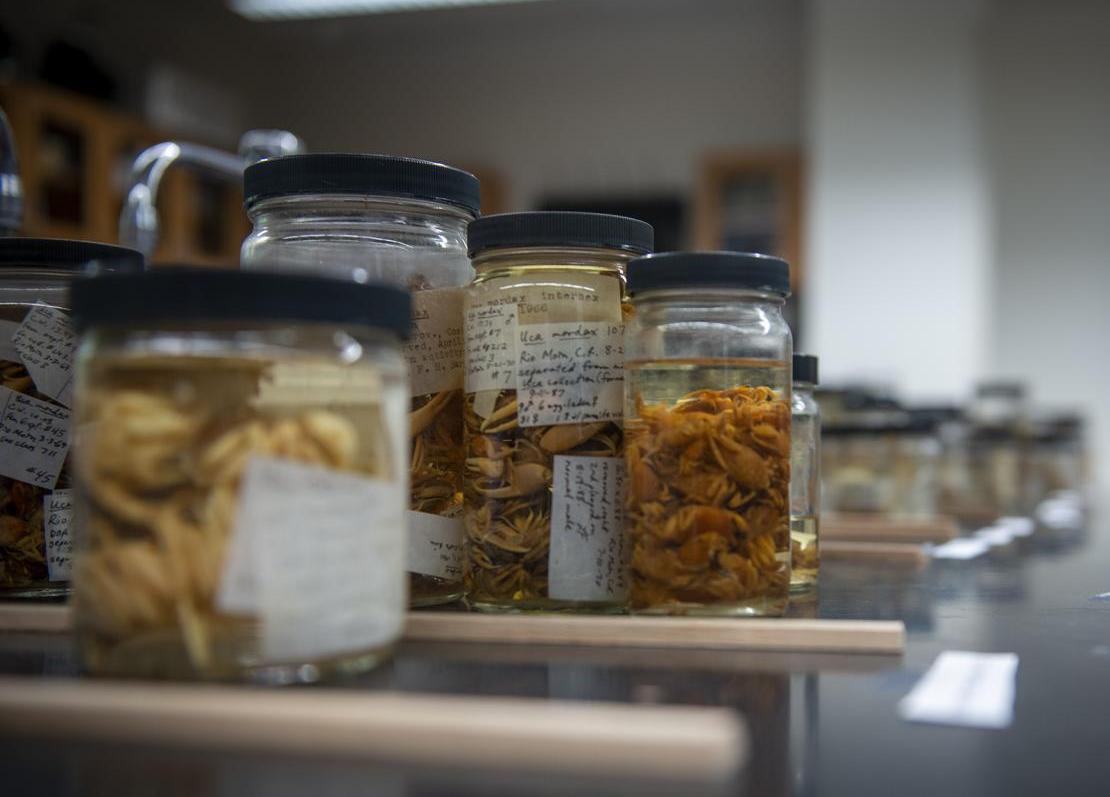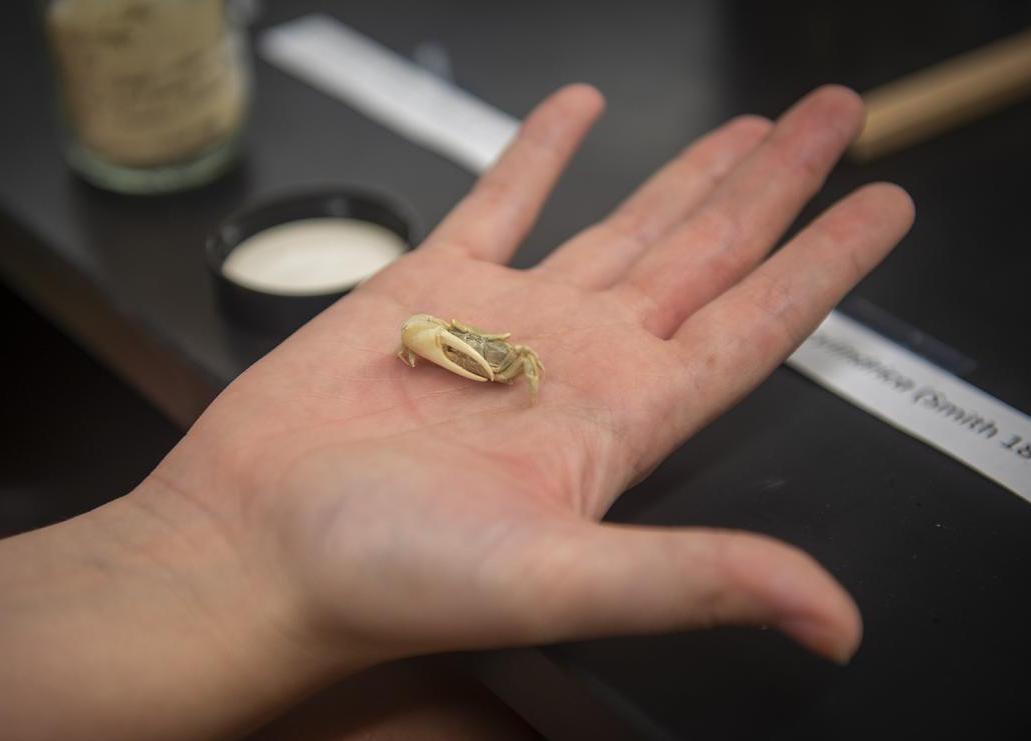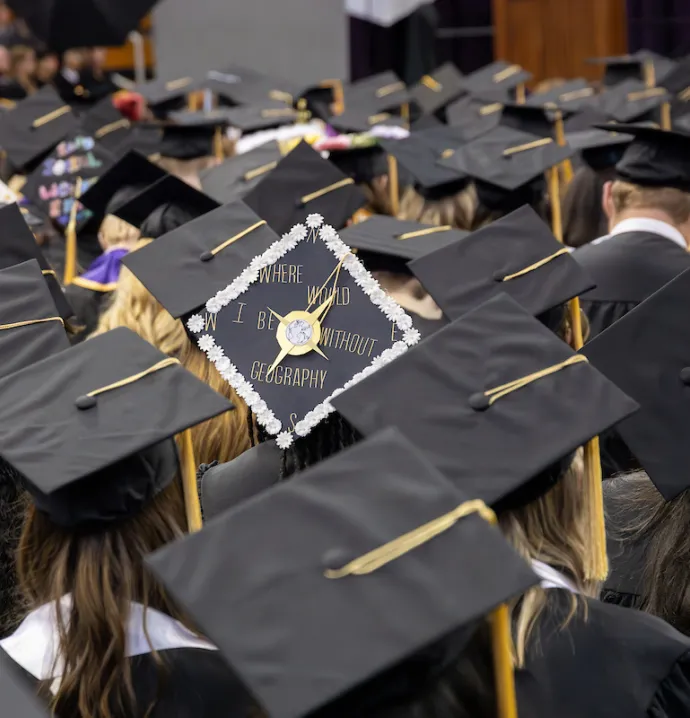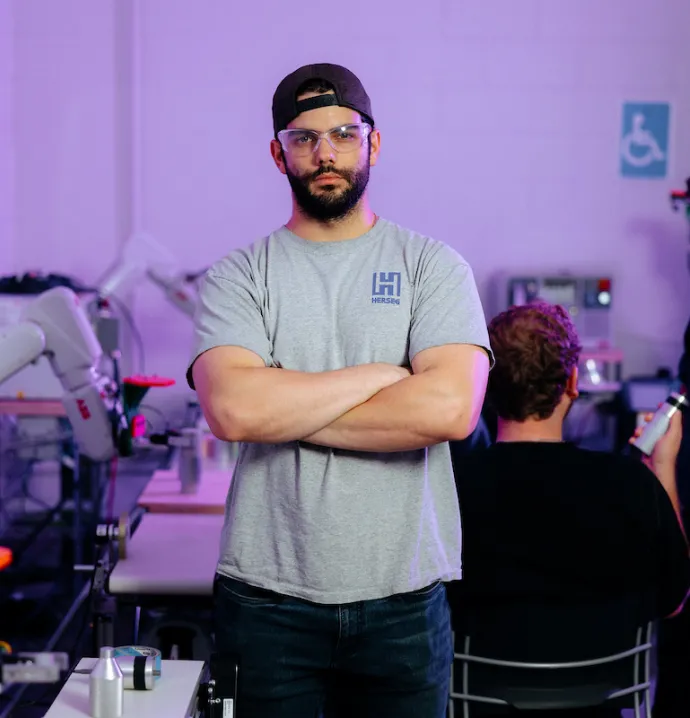Preserving a lifetime of research
Preserving a lifetime of research
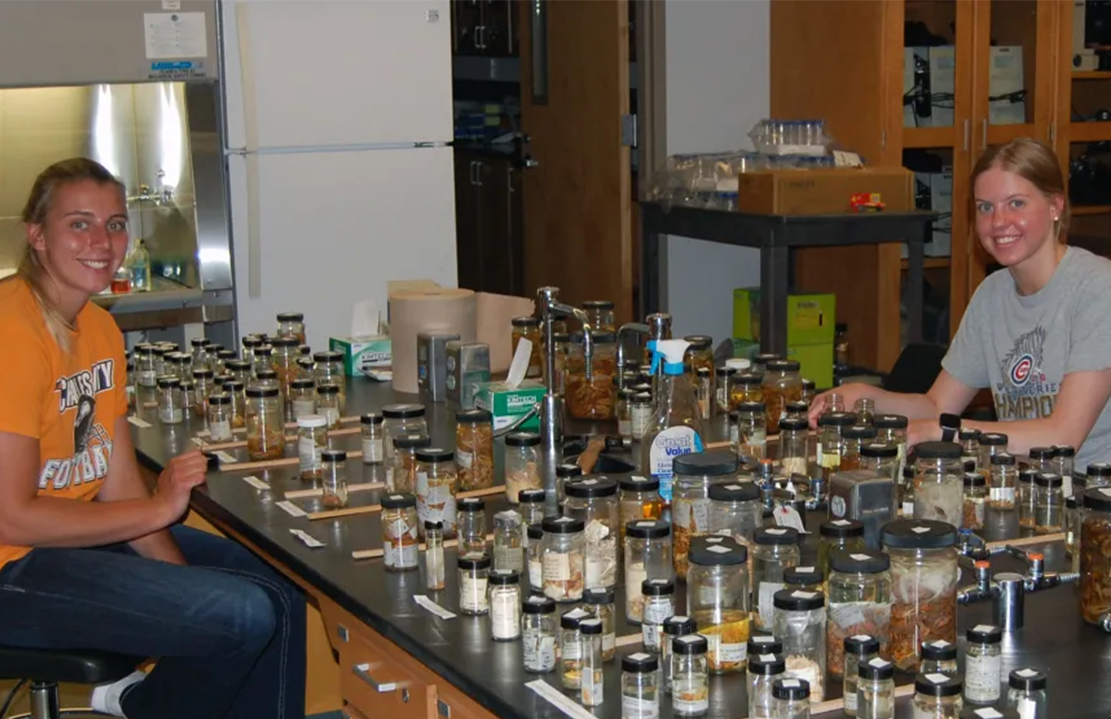
A lifetime of work was spread across the tables of a basement biology lab in McCollum Science Hall.
Led by University of Northern Iowa biology professor Carl Thurman, one of the world’s top experts in fiddler crab biology, a group of four students is curating a collection of preserved crabs for the American Museum of Natural History in New York City. Researchers there will incorporate the collection into the permanent holdings of the museum.
Hundreds of jars filled with thousands of specimens of fiddler crabs bobbed in an 80% alcohol solution behind waterproof labels, neatly arranged in rows and groups. The jars, collected over an almost 40-year span, will provide both a valuable research experience for the undergraduates and preserve a detailed snapshot of the species for future study.
The specimens were collected by Frank Barnwell, former chair of the department of ecology, evolution and behavior at the University of Minnesota. Barnwell, who was Thurman’s advisor while he was earning his doctorate, spent almost 40 years collecting the specimens from the shores of the U.S., Mexico, Costa Rica, Caribbean Islands and Brazil, as well as southern Europe, Africa, Malaysia, the Philippines, New Guinea, Fiji and Taiwan.
“Due to the time and effort put into collecting these crabs, the collection is a biological asset of immeasurable value,” Thurman said.
Thurman’s students painstakingly sorted through more than 7,700 crab specimens - some less than an inch in size. All told, they tabulated 64 species, winnowing almost 1,000 jars down to 566, discarding dry or redundant specimens and cataloguing those that remained by count, sex, species and location collected.
The information will be used in biogeographic studies charting the distribution and diversity of land crab species across the world that the students will publish and present as a poster at the end of July in the UNI – Summer Undergraduate Research Symposium.
When the collection is delivered to the American Museum of Natural History, it will provide future researchers with a detailed snapshot of the land crab population from 1965 to 2000, allowing them to compare the health, range and habitat of the species over time and determine the impacts of climate change and human interference on the species.
“Land crabs are bio-indicators of environmental health,” Thurman said. “Because each species is specialized and occupies a specific niche, they indicate changes in the habitat that might not be detected by the human eye alone.”
The significance of the work is not lost on Thurman’s students, who he refers to as “Team Crab.” Two biology majors, sophomore Amber Finke and junior Claire Kipp, are working 40 hours a week in the lab as part of UNI’s Summer Undergraduate Research Program, which provides a stipend for students to develop their research and problem solving skills over a 10-week period. The team also includes sophomore biology major Samantha Heyer and senior biology major Dee Dee Pitzen, who are working for credits in Biology Undergraduate Research and Directed Study.
All four students will apply the experience in different ways, but they all noted that the research experience they were gaining - the lessons in rigorous data collection and organization - will be applicable in the future.
For Pitzen, the research will help prepare her for medical school - she has plans to take the MCAT later this year.
“I want to take part in clinical studies if I do become a physician and this will help me learn about data and how to organize it so it makes sense to the reader,” she said.
For Finke, the future is more uncertain, although she said she is interested in pursuing a career in the biomedical field.
“I’m using this as a stepping stone to figure out what research I’d like to do in the future,” Finke said. “This is also good to have on graduate school applications and things like that.”
For Thurman, working on the collection is both a way to connect with his students and his former mentor.
“It’s fun to show the students, ‘oh, look, here’s one I collected in Costa Rica in 1974,” Thurman said. “And I know (Barnwell) well appreciate our work and how it will perpetuate his legacy.”
Thurman has been fascinated by marine life since his childhood growing up on the coast of Texas. After more than five decades studying the species, he is now a widely recognized expert on land crabs. He has collected them throughout North and South America since the late 1960s and has published more than 40 papers that have been cited by other researchers more than 1,000 times.
And his wealth of knowledge, combined with his constant presence in the lab, has been invaluable for his students.
“I have friends at other universities, and they’re taught by graduate assistants,” Pitzen said. “At UNI, we’re taught by professors with PhDs. So I get a lot more one-on-one time with my professors and I know that I’m getting accurate information that I need to succeed.”
At times, the work was tedious, laboriously fishing nickel-sized crab specimens out of jars hour after hour, but Thurman always reminded Team Crab about the importance of their work.
“This collection is going to a world-class museum, and not many undergraduate students in the U.S. are able to do this,” Thurman said. “They’ll leave an indelible mark on science history.”


